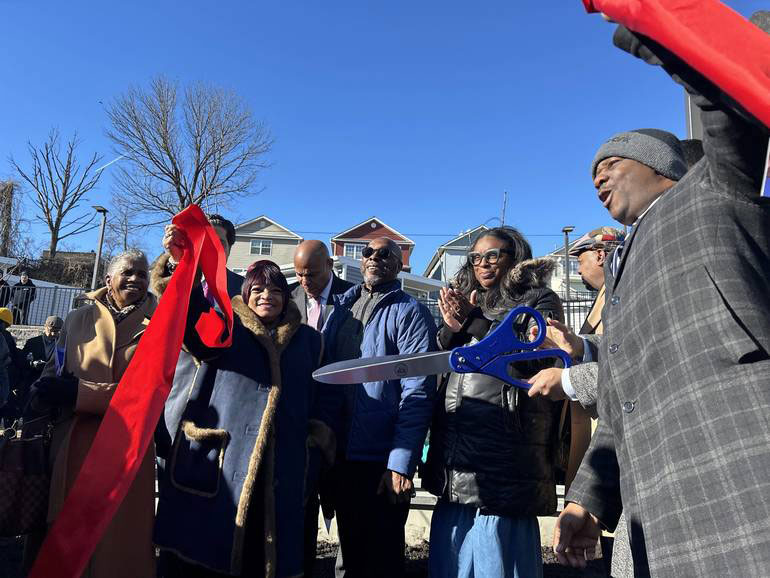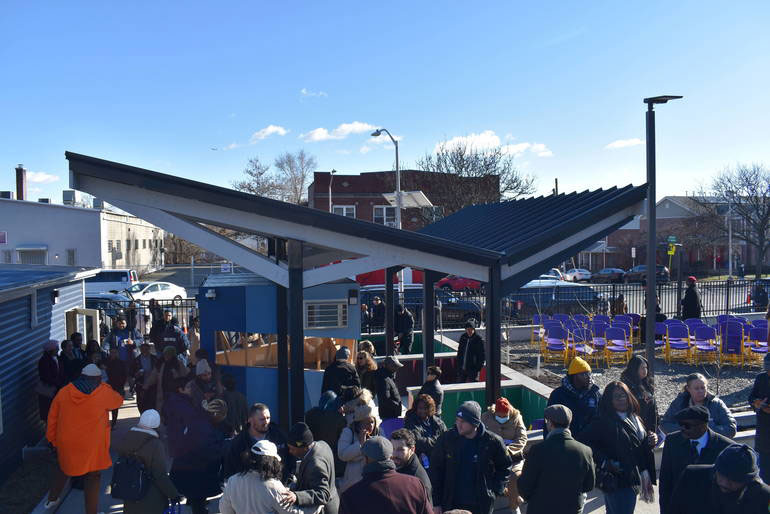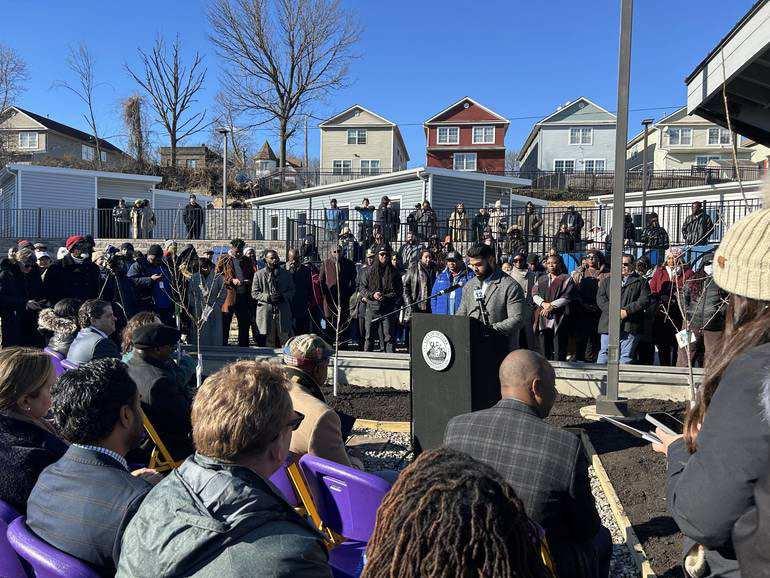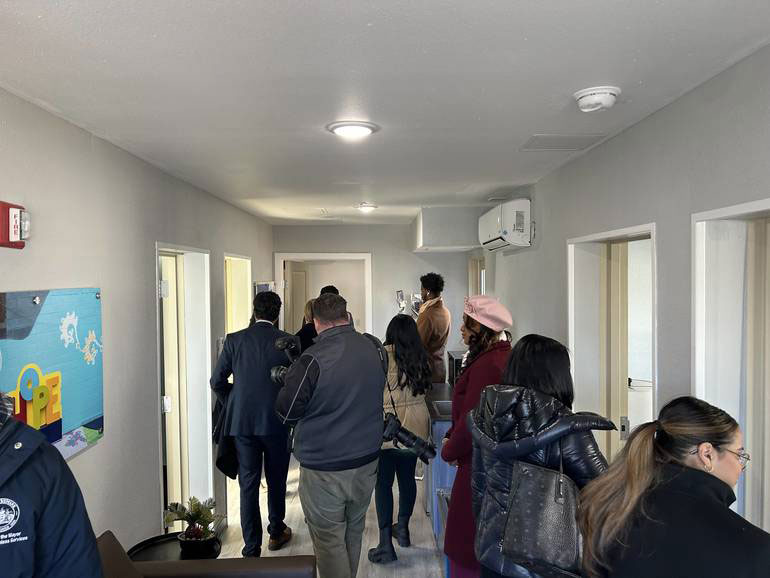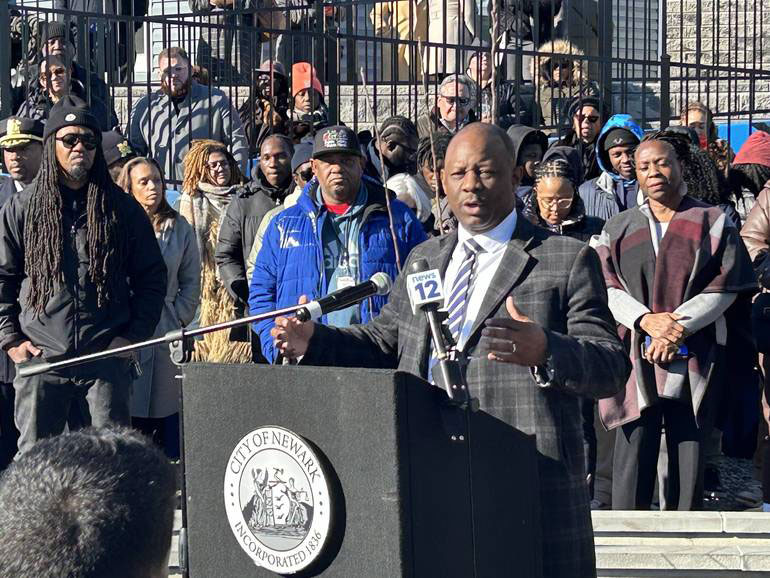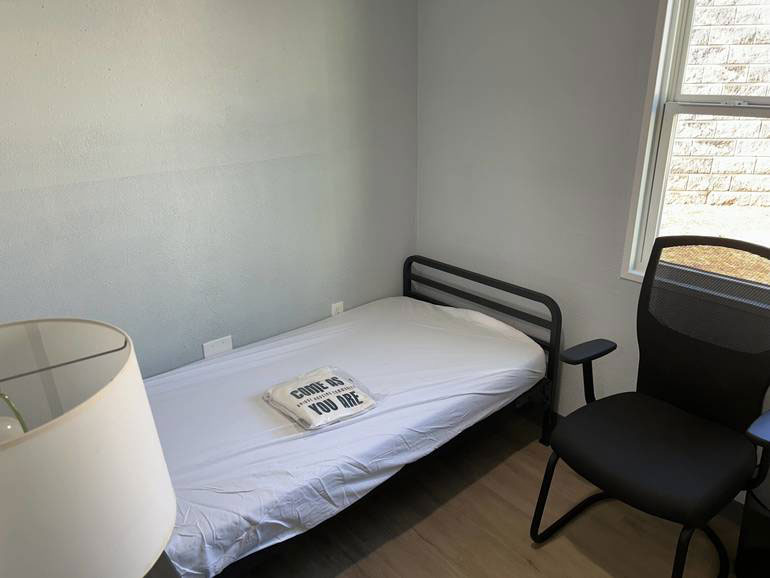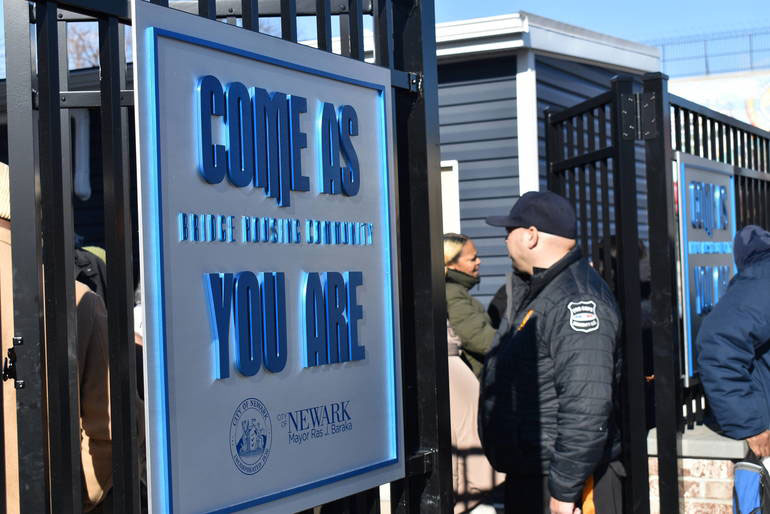20-Bed Transitional Housing ‘Village’ Opens in Newark
Officials Say Hope Village II Improves on First Container Community
A 20-bed “bridge housing community” is open for people in immediate need of shelter, the city announced on Monday, Jan. 8.
Officials celebrated the opening of the transitional housing center, “Hope Village II,” built out of seven shipping containers at 51-63 Elizabeth Ave. Several hundred gathered for the ribbon cutting and toured the units, which were furnished with beds, kitchens and bathrooms, and decorated with paintings.
“Hope Village II is considerably different than Hope Village I because it proves that we’ve learned,” Mayor Ras. J. Baraka said. “We’ve learned in that process that we did some things right, but we also did some things wrong.”
The City Council has approved up to $4.78 million for the project, which includes four amendments to the original $1.85 million cost for the project originally authorized in 2021. The council’s final amendment, however, allocated more than the needed funds, according to a city spokesperson.
Among the seven converted shipping containers are five four-bedroom units, officials said. Hope Village II differs from the first Hope Village in the additional community space that it provides outdoors, Luis Ulerio, the director of the mayor’s Office of Homeless Services, said.
“These are clusters compared to Hope Village I, where they were single units,” Ulerio added.
Partnering with the New Jersey-based Nature Conservancy, he said, the city secured a $28,000 grant to purchase 30 evergreen trees, 37 shrubs and 16 ornamental trees for the site.
With the Rutgers Department of Family and Community Health Sciences, Ulerio said, the city secured a $94,000 grant to support the construction of greenhouses, community gardens, as well as food and nutrition education workshops.
The new units also have vinyl siding, so they have the look of residential buildings. It marks a contrast from the bare look of the shipping container units at Hope Village I.
Lamont Johnson was among the people who showed up at the ribbon cutting. Johnson, 60, indicated he has had difficulty finding housing and said he could benefit from living at Hope Village II.
“I have some health issues that brought me partially into this situation,” Johnson said. “So, I’m healing up now, and I need a place like this to heal up before I’m able to go back to work.”
Ulerio said that in its first three years, Hope Village I helped over 50 people transition to permanent housing.
“It is a springboard. It is a place for them to start building themselves up,” he said.
There is no typical length of stay, Ulerio added.
“Each person has their own story, their own journey, so we have to really go by that,” he said. “And that starts in the beginning when we do an assessment, and we learn about their challenges and their strengths.”
United Community Corporation provides case management, supervision and more secure housing placement for the guests at both of the Hope villages, UCC Executive Director Craig Mainor said in an interview.
“We fill the beds, help people move into more permanent housing and then put more people into those beds,” Mainor said. “We’re the agency responsible for the 50 permanent placements.”
The Newark Housing Authority provides Section 8 vouchers and then UCC works with local landlords and property managers to fill their vacant units, he said.
“The couple, or the individual, who has been placed into permanent housing, we stay with them to help them stay in that unit,” Mainor said. “If you’ve been on the street for years, one of the challenges of moving into permanent housing is to be able to keep up your end of the deal.”
Janel Winters, director of the state Division of Housing & Community Resources, said New Jersey directs thousands of housing vouchers to the city of Newark. Winters described the construction of the shipping container housing as an expedited process to get people into shelter.
“The thing we see here is a whole community of people and leadership saying we can’t wait,” Winters said. “We can’t wait for what the usual process is. How do we make this happen? How do we get this done as quickly as possible?”
